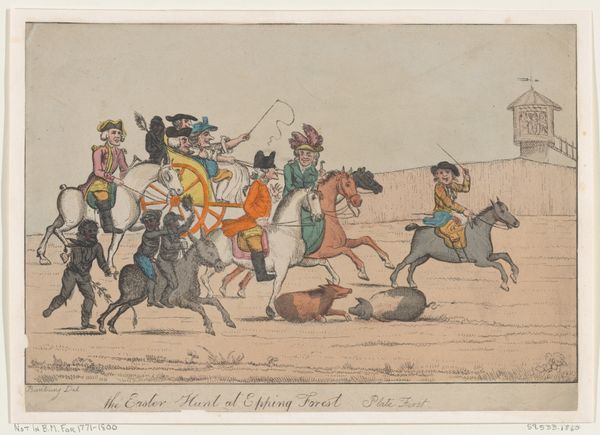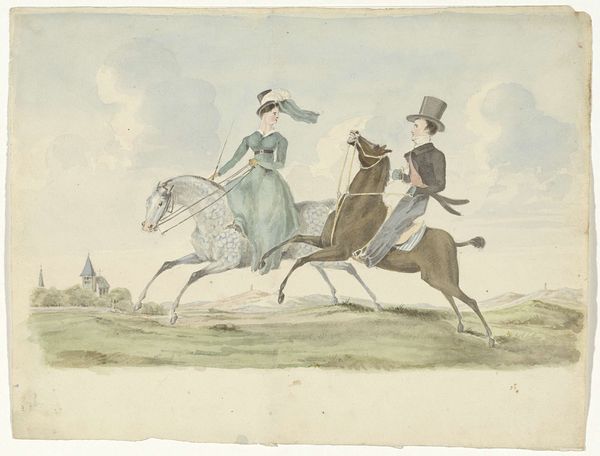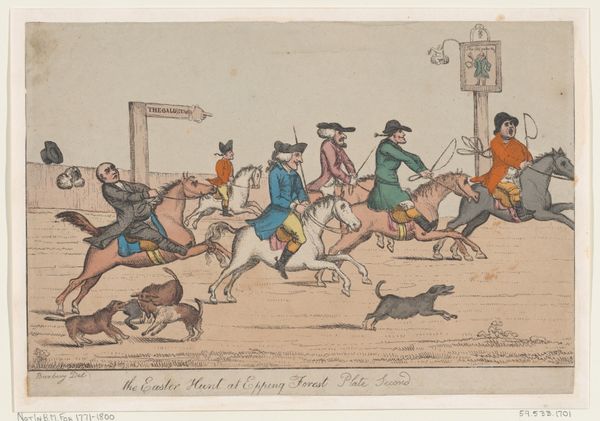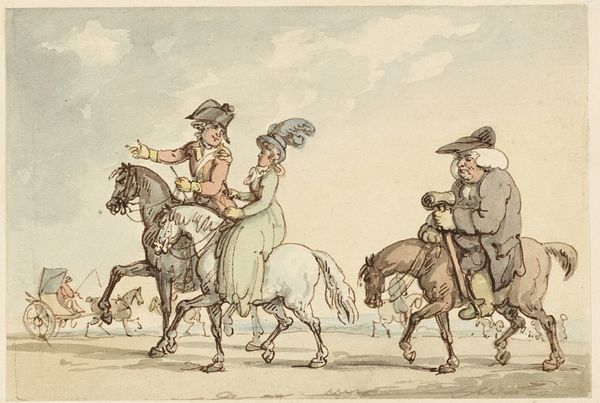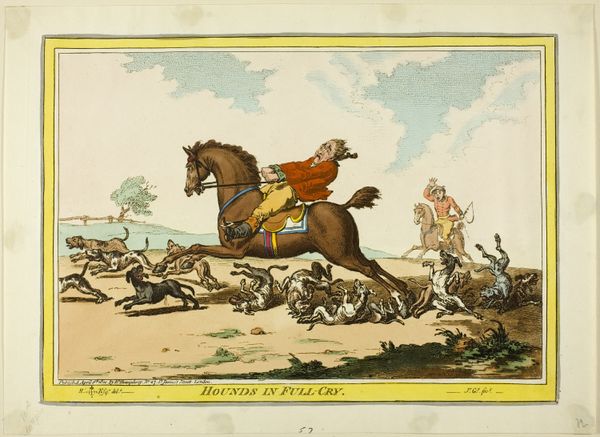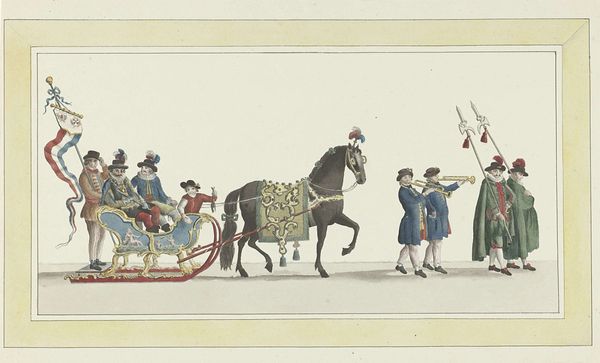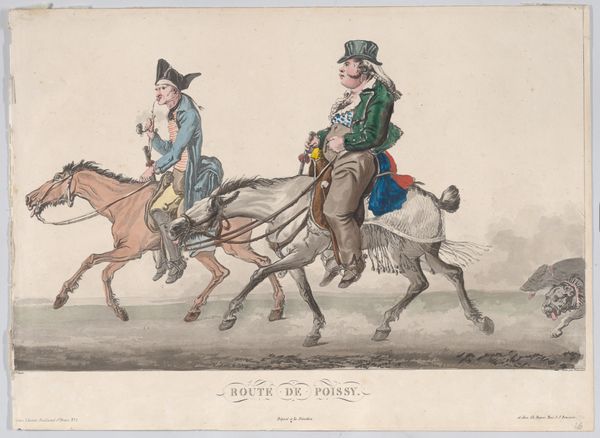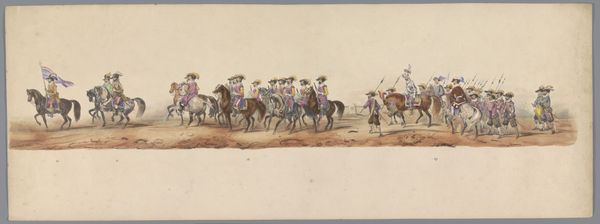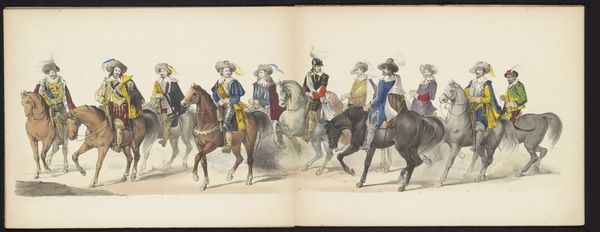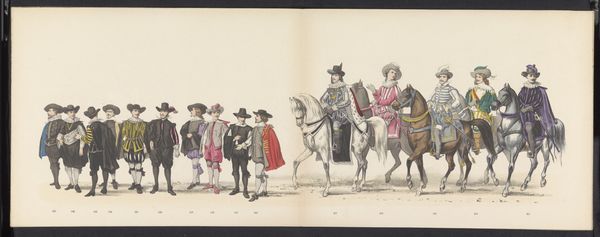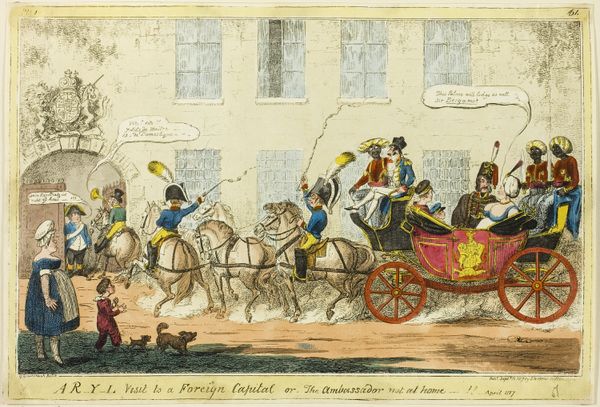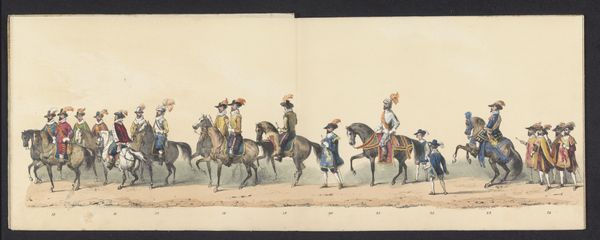
drawing, print, pencil
#
drawing
# print
#
caricature
#
romanticism
#
pencil
#
horse
#
men
#
genre-painting
#
history-painting
Dimensions: plate: 9 13/16 x 13 3/4 in. (24.9 x 34.9 cm) sheet: 10 9/16 x 15 1/16 in. (26.8 x 38.2 cm)
Copyright: Public Domain
Curator: What a bustling scene. It feels as though a Regency-era fashion plate collided with a slapstick comedy. Editor: Exactly! The dynamism practically bursts from the paper. The horses’ legs are a flurry of activity kicking up dust, rendered with rapid strokes of pencil and then translated into print. I imagine the paper quality itself would be quite smooth to accommodate the fine detail. Curator: This lively piece, titled "Dandies in Rotten Row", dates back to 1819 and comes to us from the hand of William Heath, who often went by the pseudonym 'Paul Pry'. Editor: It is intriguing how Heath manages to depict class tensions here through line and form. Look at the scale and labor involved. It’s not just about who can afford the finest horses; it’s about presenting a performative, fleeting lifestyle. Curator: Yes, there’s certainly a pointed commentary here. Consider the exaggerated silhouettes – the impossibly high collars, the elaborate wigs or hairstyles. These 'dandies' are almost monstrous caricatures of the fashionable elite. In a way, these images immortalized, even solidified, specific archetypes. One wonders how it was viewed when the fashions depicted were still modern? Editor: And notice the strategic deployment of color, Curator. The dandy at the forefront wears such an assertive blue! And that pop serves to push him visually ahead, a strategic touch when printing processes still necessitated considerable technical skills for multicolored pieces. But it is their bodies, the fabric around them, and their literal and metaphoric conveyance that tells the more complete story about the production of culture and social status. Curator: You know, beyond the surface satire, there’s a melancholic element present, perhaps a memento mori. After all, even the most meticulously crafted appearances are destined to fade. Editor: Yes! Despite all the activity and vibrant colours there’s almost a ghostly fleeting nature. Curator: Considering its creation and place in time I can't help but wonder what future generations will think when seeing this print? It's another step in the conversation we're currently having now about that era. Editor: Absolutely. By taking a look at material processes, maybe even the paper it’s printed on, we find these deeper resonances and understand more about our current culture of production.
Comments
No comments
Be the first to comment and join the conversation on the ultimate creative platform.
